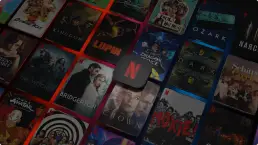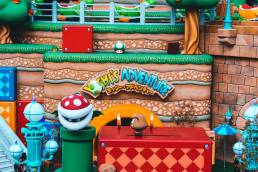How the streaming giant is rewriting
the rules of content creation and distribution.
Introduction: The Netflix Revolution
In the ever-evolving landscape of digital entertainment, one name stands out as a true pioneer: Netflix. What started as a humble DVD-by-mail service has transformed into a global streaming powerhouse, reshaping how we consume and interact with content. But Netflix’s success isn’t just about streaming movies and TV shows; it’s about a carefully crafted strategic narrative that has positioned the company at the forefront of the entertainment industry. As we dive into the intricacies of Netflix’s strategy, we’ll uncover the key elements that have made it a household name and a darling of both consumers and investors. From its data-driven approach to content creation to its global expansion efforts, Netflix’s journey offers valuable lessons for businesses across industries.
The Power of Personalization: Netflix’s Data-Driven Content Strategy
At the heart of Netflix’s strategic narrative lies a commitment to personalization that borders on the obsessive. Unlike traditional media companies that rely on focus groups and gut instincts, Netflix has built its empire on a foundation of data analytics and machine learning algorithms. “Netflix doesn’t just recommend content; it creates a unique viewing experience for each user,” says Elena Neira, author of “The Netflix Effect: Technology and Entertainment in the 21st Century.” This personalized approach extends far beyond simple recommendations. It informs every aspect of Netflix’s content strategy, from acquisition to production.
The Netflix Recommendation Engine: More Than Just Suggestions
Fun fact: Did you know that Netflix’s recommendation system saves the company an estimated $1 billion per year by reducing subscriber churn? That’s the power of personalization in action! The recommendation engine is like a super-smart friend who knows your taste in movies better than you do. It doesn’t just look at what you’ve watched; it analyzes how you watch. Did you binge-watch that series in one night? Did you rewind to catch that plot twist again? All these little details help Netflix understand what makes you tick as a viewer. But here’s where it gets really interesting: Netflix uses this data to inform its content creation decisions. Imagine if your friend not only recommended movies but could also predict what kind of movies you’d love in the future – and then make those movies for you. That’s essentially what Netflix is doing on a massive scale.
From Data to Drama: How Netflix Creates Hit Shows
Remember when “House of Cards” first premiered? It wasn’t just a shot in the dark. Netflix knew, based on its treasure trove of viewer data, that there was a significant overlap between fans of Kevin Spacey, viewers who enjoyed the original British series, and those who liked political dramas. This data-driven approach to content creation has led to numerous hits and has fundamentally changed how stories are told and consumed. As Ross Benes, author of “The Netflix Effect,” puts it, “Netflix isn’t just in the business of entertaining; they’re in the business of knowing what entertains you.”
Going Global: Netflix’s Content Localization Strategy
While personalization might be the engine driving Netflix’s success, its global content strategy is the vehicle carrying it to new heights. Netflix’s approach to international markets isn’t just about translating American content into different languages. It’s about creating and acquiring content that resonates with local audiences around the world.
The “Glocal” Approach: Think Globally, Act Locally
Netflix’s global content strategy can be summed up in one word: “glocal.” It’s a portmanteau of “global” and “local,” and it perfectly encapsulates Netflix’s approach to international markets. The company aims to be a global platform that feels local to users wherever they are. Judith Clares-Gavilán and Jordi Sánchez-Navarro, in their study “Netflix’s European Strategy: Production and Content Acquisition Policies,” highlight how this approach has been crucial to Netflix’s success in Europe. “By investing in local content and talent, Netflix isn’t just entering new markets; it’s becoming an integral part of local entertainment ecosystems,” they note. Let’s break this down with an example kids can understand. Imagine you’re playing with friends from different countries. Instead of forcing everyone to play your favorite game, you learn games from each country and teach them to the group. That’s essentially what Netflix is doing with content – learning what different audiences love and sharing it with the world.
From “Narcos” to “Dark”: Netflix’s Global Hit Factory
Netflix’s global strategy has led to the creation of international hits that transcend borders. Shows like the German sci-fi thriller “Dark,” the Spanish heist drama “Money Heist,” or the Korean zombie period piece “Kingdom” have found audiences far beyond their countries of origin. This approach not only helps Netflix appeal to diverse audiences but also introduces viewers to stories and perspectives they might never have encountered otherwise. It’s like having a friend who travels the world and brings back the best stories from every country they visit.
Disruption as a Business Model: Netflix’s Evolutionary Journey
Netflix’s strategic narrative isn’t just about what it does; it’s about what it has always done – disrupt. From its inception, Netflix has positioned itself as an innovator, constantly challenging the status quo of the entertainment industry. This narrative of continual evolution and adaptation is central to its brand identity and market strategy.
From DVDs to Streaming: The First Act of Disruption
Remember when going to a video rental store was a Friday night ritual? Netflix changed all that. Its initial DVD-by-mail service was revolutionary, eliminating late fees and offering a vast library of titles. But Netflix didn’t stop there. As Stefan Michel points out in “The Netflix Innovation Strategy: Redefining Industry Boundaries,” Netflix’s transition to streaming was a masterstroke of foresight. “Netflix didn’t just adapt to the digital age; it helped shape it,” Michel notes. This move wasn’t just about changing how people watched movies; it was about changing how people thought about entertainment itself. Fun fact: When Netflix launched its streaming service in 2007, many thought it was too early. Broadband wasn’t widespread, and video quality was often poor. But Netflix saw the future and positioned itself to lead it.
Original Content: Netflix Becomes a Studio
Just when the industry thought it had Netflix figured out, the company pivoted again. In 2013, with the release of “House of Cards,” Netflix transformed from a content distributor to a content creator. This move was more than just vertical integration; it was a complete reimagining of what a media company could be. By producing its own content, Netflix gained several advantages:
- Control over its content library
- Ability to create shows tailored to its audience’s preferences
- Freedom from licensing negotiations with traditional studios
As Ben Silverman, Emmy-winning producer and former NBC Entertainment co-chairman, puts it, “Netflix didn’t just want a seat at the table; they built their own table and invited everyone else to join.”

Personalization is one of Netflix’s key strategies. Emphasizing the user experience tends to pay off in strategic narratives.
The Netflix Effect: Reshaping the Entertainment Landscape
Netflix’s strategic narrative has had ripple effects throughout the entertainment industry. Its success has sparked what many call “The Streaming Wars,” with traditional media companies scrambling to launch their own streaming services.
Binge-Watching: A New Consumption Model
One of Netflix’s most significant contributions to modern entertainment culture is the concept of binge-watching. By releasing entire seasons at once, Netflix changed not just how we watch TV, but how we talk about it, how we schedule our free time, and even how stories are structured. This approach has its roots in Netflix’s data-driven strategy. The company noticed that many users, when given the chance, would watch multiple episodes of a show in one sitting. Instead of fighting this behavior, Netflix embraced it, turning it into a cultural phenomenon.
The Attention Economy: Netflix’s True Competitors
In Netflix’s worldview, its competition isn’t just other streaming services or traditional TV networks. As former CEO Reed Hastings famously said, Netflix competes with sleep. This statement encapsulates Netflix’s understanding of the attention economy – the idea that consumer attention is a finite resource that all forms of entertainment are vying for. This perspective drives Netflix to continually innovate, not just in content but in user experience. Features like autoplay, personalized thumbnails, and interactive content (like “Black Mirror: Bandersnatch”) are all designed to keep viewers engaged and coming back for more.
Challenges and Future Directions
Despite its successes, Netflix’s strategic narrative faces several challenges as it moves forward.
Content Costs and Competition
As more players enter the streaming market, the cost of producing and acquiring content continues to rise. Netflix’s huge investments in original content (over $17 billion in 2020 alone) have led to concerns about the company’s long-term profitability. Moreover, as traditional media companies launch their own streaming services, Netflix is losing access to some popular licensed content. Shows like “The Office” and “Friends,” once mainstays of Netflix’s library, have moved to competitor platforms.
Global Regulatory Challenges
As Netflix expands globally, it faces a complex web of local regulations and cultural expectations. In some countries, Netflix has faced calls for content regulation or requirements to produce a certain percentage of local content.
The Next Act of Disruption
So, what’s next in Netflix’s strategic narrative? While the company keeps its cards close to its chest, there are hints of potential future directions:
- Interactive content: Building on the success of “Bandersnatch,” Netflix could further blur the lines between passive viewing and active participation.
- Gaming: Netflix has already dipped its toes into the gaming world with titles based on popular shows like “Stranger Things.”
- Virtual Reality: As VR technology improves, Netflix could pioneer new immersive viewing experiences.
Conclusion: Lessons from Netflix’s Strategic Narrative
Netflix’s journey offers valuable lessons for businesses across industries:
- Embrace data, but don’t forget the human element: Netflix’s success comes from balancing algorithmic recommendations with human creativity.
- Think globally, act locally: Success in international markets requires more than just translation; it requires genuine engagement with local cultures and stories.
- Disrupt yourself before others disrupt you: Netflix’s willingness to cannibalize its own successful DVD business in favor of streaming shows the importance of forward-thinking innovation.
- Focus on the user experience: Netflix’s obsession with reducing friction in the viewing experience has been key to its success.
As we look to the future, one thing is clear: Netflix’s strategic narrative is far from over. As it continues to evolve and adapt, Netflix will undoubtedly keep reshaping the entertainment landscape, one stream at a time. Whether you’re a tech professional, entrepreneur, marketer, or designer, there’s much to learn from Netflix’s approach to strategy and innovation. As you consider your own strategic narratives, remember: the goal isn’t just to tell a story, but to write the future. For more insights on developing powerful strategic narratives for your business, take a look at Zamora Design’s Strategic Narrative Development services. Like Netflix, your story of innovation and success is waiting to be told.
Contact me if you have any questions you’d like answered! And if you enjoyed this article, be sure to check out my analysis of the strategic narratives of Lego, Nike, Apple, Harley Davidson, Patagonia, and AirBnB.
Related Posts
November 18, 2024
Crafting the Future: OpenAI’s Strategic Narrative
Explore OpenAI's strategic narrative and discover how storytelling shapes its…
November 18, 2024
Unpacking Shopify’s Strategic Narrative: Rewriting the Rules of eCommerce
Explore how Shopify transformed from a snowboard shop to a global commerce…
November 12, 2024
Canva’s Strategic Narrative: How Design Democratization Created a $40 Billion Empire
Discover how Canva's strategic narrative empowers creativity through…
November 12, 2024
Nintendo’s Strategic Narrative: A Masterclass in Storytelling
In the ever-evolving landscape of the gaming industry, Nintendo stands as a…
Related Posts
November 18, 2024
Crafting the Future: OpenAI’s Strategic Narrative
Explore OpenAI's strategic narrative and discover how storytelling shapes its…
November 18, 2024
Unpacking Shopify’s Strategic Narrative: Rewriting the Rules of eCommerce
Explore how Shopify transformed from a snowboard shop to a global commerce…
November 12, 2024
Canva’s Strategic Narrative: How Design Democratization Created a $40 Billion Empire
Discover how Canva's strategic narrative empowers creativity through…
November 12, 2024
Nintendo’s Strategic Narrative: A Masterclass in Storytelling
In the ever-evolving landscape of the gaming industry, Nintendo stands as a…







